Modern human societies are based on the concept of free will, though science is slowly discovering it may not be as ‘free’ as we thought. We’re only now learning that many of our everyday decisions are actually taken by the subconscious part of the brain – a complex network of neural signals and connections.
#1 It is said that some people can guess someone’s sexuality – colloquially known as the ‘gaydar’ – but how accurate is it? Initially, it might seem like just another way to mask existing stereotypes about anyone who is not on the ‘straight’ spectrum, which may well be true. Science says that, if we switch to our subconscious brain and don’t think about it, most of us do have this ability.
People can guess someone’s sexual orientation from a picture within a tenth of a second, according to studies. Even when all but the face is cropped from the photograph, it holds true. In other words, it has little to do with clothing or mannerisms, and more to do with how the human brain naturally responds to faces.
While everyone has it to some degree, some people are better – or worse – at it. People who hold homophobic views, for example, perform poorly in these studies.
It is said that some people can guess someone’s sexuality – colloquially known as the ‘gaydar’ – but how accurate is it? Initially, it might seem like just another way to mask existing stereotypes about anyone who is not on the ‘straight’ spectrum, which may well be true. Science says that, if we switch to our subconscious brain and don’t think about it, most of us do have this ability.
People can guess someone’s sexual orientation from a picture within a tenth of a second, according to studies. Even when all but the face is cropped from the photograph, it holds true. In other words, it has little to do with clothing or mannerisms, and more to do with how the human brain naturally responds to faces.
While everyone has it to some degree, some people are better – or worse – at it. People who hold homophobic views, for example, perform poorly in these studies.
The Gaydar
 It is said that some people can guess someone’s sexuality – colloquially known as the ‘gaydar’ – but how accurate is it? Initially, it might seem like just another way to mask existing stereotypes about anyone who is not on the ‘straight’ spectrum, which may well be true. Science says that, if we switch to our subconscious brain and don’t think about it, most of us do have this ability.
People can guess someone’s sexual orientation from a picture within a tenth of a second, according to studies. Even when all but the face is cropped from the photograph, it holds true. In other words, it has little to do with clothing or mannerisms, and more to do with how the human brain naturally responds to faces.
While everyone has it to some degree, some people are better – or worse – at it. People who hold homophobic views, for example, perform poorly in these studies.
It is said that some people can guess someone’s sexuality – colloquially known as the ‘gaydar’ – but how accurate is it? Initially, it might seem like just another way to mask existing stereotypes about anyone who is not on the ‘straight’ spectrum, which may well be true. Science says that, if we switch to our subconscious brain and don’t think about it, most of us do have this ability.
People can guess someone’s sexual orientation from a picture within a tenth of a second, according to studies. Even when all but the face is cropped from the photograph, it holds true. In other words, it has little to do with clothing or mannerisms, and more to do with how the human brain naturally responds to faces.
While everyone has it to some degree, some people are better – or worse – at it. People who hold homophobic views, for example, perform poorly in these studies.
#2 The ability to sense the Earth’s magnetic field – or magnetoreception – has been extensively studied across the animal kingdom. Various species have it in different forms, from migratory birds to marine animals to even some butterfly species. They can see the magnetic field in their vision, too, which is pretty cool.
Humans have largely lost the ability to use GPS at all times, even if it would be handy. However, some research suggests that not all of it is gone. Scientists from Caltech and the University of Tokyo have shown that changes in the magnetic field of our surroundings trigger discernible changes in the brain, proving for the first time that humans have magnetoreception. During our early days, it may have been quite helpful for navigation.
The ability to sense the Earth’s magnetic field – or magnetoreception – has been extensively studied across the animal kingdom. Various species have it in different forms, from migratory birds to marine animals to even some butterfly species. They can see the magnetic field in their vision, too, which is pretty cool.
Humans have largely lost the ability to use GPS at all times, even if it would be handy. However, some research suggests that not all of it is gone. Scientists from Caltech and the University of Tokyo have shown that changes in the magnetic field of our surroundings trigger discernible changes in the brain, proving for the first time that humans have magnetoreception. During our early days, it may have been quite helpful for navigation.
Magnetoreception
 The ability to sense the Earth’s magnetic field – or magnetoreception – has been extensively studied across the animal kingdom. Various species have it in different forms, from migratory birds to marine animals to even some butterfly species. They can see the magnetic field in their vision, too, which is pretty cool.
Humans have largely lost the ability to use GPS at all times, even if it would be handy. However, some research suggests that not all of it is gone. Scientists from Caltech and the University of Tokyo have shown that changes in the magnetic field of our surroundings trigger discernible changes in the brain, proving for the first time that humans have magnetoreception. During our early days, it may have been quite helpful for navigation.
The ability to sense the Earth’s magnetic field – or magnetoreception – has been extensively studied across the animal kingdom. Various species have it in different forms, from migratory birds to marine animals to even some butterfly species. They can see the magnetic field in their vision, too, which is pretty cool.
Humans have largely lost the ability to use GPS at all times, even if it would be handy. However, some research suggests that not all of it is gone. Scientists from Caltech and the University of Tokyo have shown that changes in the magnetic field of our surroundings trigger discernible changes in the brain, proving for the first time that humans have magnetoreception. During our early days, it may have been quite helpful for navigation.
#3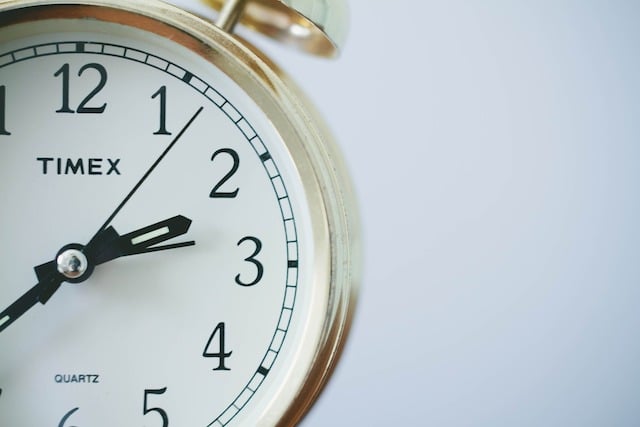 Circadian rhythms are changes inside the body that occur in 24-hour cycles. Nocturnal animals use them to sense dylight without having to go outside. In some cases, flowers that react to daylight run on circadian cycles and adapt to the changes in seasons.
The suprachiasmatic nucleus, or SCN, is a part of the subconscious brain that regulates many vital functions, such as emotions, sleep, and hunger. Besides the sleep-wake cycle, we know little about the others, especially those that affect our mood. Light entering the eyes is largely responsible for them, but genes and factors like social activity, stress, and exercise also play a role.
Circadian rhythms are changes inside the body that occur in 24-hour cycles. Nocturnal animals use them to sense dylight without having to go outside. In some cases, flowers that react to daylight run on circadian cycles and adapt to the changes in seasons.
The suprachiasmatic nucleus, or SCN, is a part of the subconscious brain that regulates many vital functions, such as emotions, sleep, and hunger. Besides the sleep-wake cycle, we know little about the others, especially those that affect our mood. Light entering the eyes is largely responsible for them, but genes and factors like social activity, stress, and exercise also play a role.
Keeping Time
 Circadian rhythms are changes inside the body that occur in 24-hour cycles. Nocturnal animals use them to sense dylight without having to go outside. In some cases, flowers that react to daylight run on circadian cycles and adapt to the changes in seasons.
The suprachiasmatic nucleus, or SCN, is a part of the subconscious brain that regulates many vital functions, such as emotions, sleep, and hunger. Besides the sleep-wake cycle, we know little about the others, especially those that affect our mood. Light entering the eyes is largely responsible for them, but genes and factors like social activity, stress, and exercise also play a role.
Circadian rhythms are changes inside the body that occur in 24-hour cycles. Nocturnal animals use them to sense dylight without having to go outside. In some cases, flowers that react to daylight run on circadian cycles and adapt to the changes in seasons.
The suprachiasmatic nucleus, or SCN, is a part of the subconscious brain that regulates many vital functions, such as emotions, sleep, and hunger. Besides the sleep-wake cycle, we know little about the others, especially those that affect our mood. Light entering the eyes is largely responsible for them, but genes and factors like social activity, stress, and exercise also play a role.
#4 When we meet someone new, our brain makes a rapid, lightning fast guess about what they’re like, called intuition. People are judged based on what they say instead of how they look despite our best efforts to do so, which is where the active part of the brain comes in. Subconsciously, however, we have no control over the process.
It’s also more accurate. If we don’t think about it too much – which decreases the overall accuracy – the brain is good at judging someone in a fraction of a second. Across a wide range of areas, too – from sexuality to political affiliation.
We still don’t know, however, what these guesses are based on, or which facial features correspond to these traits.
When we meet someone new, our brain makes a rapid, lightning fast guess about what they’re like, called intuition. People are judged based on what they say instead of how they look despite our best efforts to do so, which is where the active part of the brain comes in. Subconsciously, however, we have no control over the process.
It’s also more accurate. If we don’t think about it too much – which decreases the overall accuracy – the brain is good at judging someone in a fraction of a second. Across a wide range of areas, too – from sexuality to political affiliation.
We still don’t know, however, what these guesses are based on, or which facial features correspond to these traits.
Judging Someone
 When we meet someone new, our brain makes a rapid, lightning fast guess about what they’re like, called intuition. People are judged based on what they say instead of how they look despite our best efforts to do so, which is where the active part of the brain comes in. Subconsciously, however, we have no control over the process.
It’s also more accurate. If we don’t think about it too much – which decreases the overall accuracy – the brain is good at judging someone in a fraction of a second. Across a wide range of areas, too – from sexuality to political affiliation.
We still don’t know, however, what these guesses are based on, or which facial features correspond to these traits.
When we meet someone new, our brain makes a rapid, lightning fast guess about what they’re like, called intuition. People are judged based on what they say instead of how they look despite our best efforts to do so, which is where the active part of the brain comes in. Subconsciously, however, we have no control over the process.
It’s also more accurate. If we don’t think about it too much – which decreases the overall accuracy – the brain is good at judging someone in a fraction of a second. Across a wide range of areas, too – from sexuality to political affiliation.
We still don’t know, however, what these guesses are based on, or which facial features correspond to these traits.
#5 The popular notion of free will assumes we’re actively in control of our decisions, which neuroscientists are now questioning. In fact, many parts of that decision-making process happen in the brain, completely outside of conscious awareness. Studies even show that the decision-making process begins at least 10 seconds before the choice has already been made, in a region of the brain lying just before the forehead
That doesn’t mean the brain makes our decisions for us. Rather, it illustrates the complex subconscious signals that go into a conscious decision, which is still made by the active part of the brain. We don’t know what those signals are, or how much they influence our decision-making.
The popular notion of free will assumes we’re actively in control of our decisions, which neuroscientists are now questioning. In fact, many parts of that decision-making process happen in the brain, completely outside of conscious awareness. Studies even show that the decision-making process begins at least 10 seconds before the choice has already been made, in a region of the brain lying just before the forehead
That doesn’t mean the brain makes our decisions for us. Rather, it illustrates the complex subconscious signals that go into a conscious decision, which is still made by the active part of the brain. We don’t know what those signals are, or how much they influence our decision-making.
Making A Decision
 The popular notion of free will assumes we’re actively in control of our decisions, which neuroscientists are now questioning. In fact, many parts of that decision-making process happen in the brain, completely outside of conscious awareness. Studies even show that the decision-making process begins at least 10 seconds before the choice has already been made, in a region of the brain lying just before the forehead
That doesn’t mean the brain makes our decisions for us. Rather, it illustrates the complex subconscious signals that go into a conscious decision, which is still made by the active part of the brain. We don’t know what those signals are, or how much they influence our decision-making.
The popular notion of free will assumes we’re actively in control of our decisions, which neuroscientists are now questioning. In fact, many parts of that decision-making process happen in the brain, completely outside of conscious awareness. Studies even show that the decision-making process begins at least 10 seconds before the choice has already been made, in a region of the brain lying just before the forehead
That doesn’t mean the brain makes our decisions for us. Rather, it illustrates the complex subconscious signals that go into a conscious decision, which is still made by the active part of the brain. We don’t know what those signals are, or how much they influence our decision-making.
#6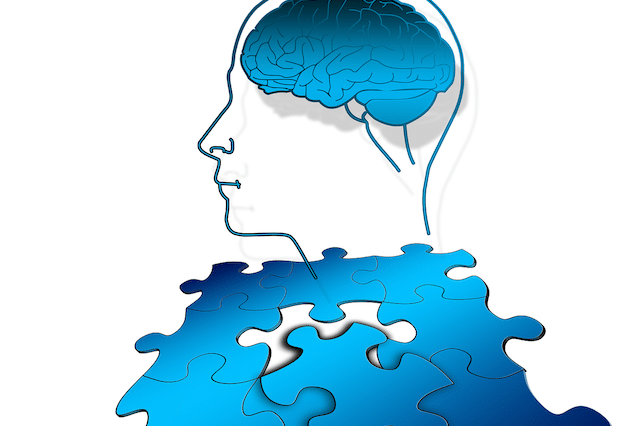 Memories are rarely perfect recollections of the past. It’s a rather mysterious part of the brain, as we still don’t know how it encodes memories, though we know that lots of guesswork goes into it. When we retrieve a memory, the brain tends to replace irrelevant or incomplete parts with additional information, giving us a coherent – even if sometimes inaccurate – picture of the past.
In law enforcement, false memories are common. The victims of childhood abuse are often unable to tell if repressed, traumatic memories from the past are real or not. Since there has been no corroborating evidence, it has been difficult to prosecute the perpetrators, as the human brain is surprisingly adept at creating false memories – especially after trauma – even if they aren’t too far from the truth.
Memories are rarely perfect recollections of the past. It’s a rather mysterious part of the brain, as we still don’t know how it encodes memories, though we know that lots of guesswork goes into it. When we retrieve a memory, the brain tends to replace irrelevant or incomplete parts with additional information, giving us a coherent – even if sometimes inaccurate – picture of the past.
In law enforcement, false memories are common. The victims of childhood abuse are often unable to tell if repressed, traumatic memories from the past are real or not. Since there has been no corroborating evidence, it has been difficult to prosecute the perpetrators, as the human brain is surprisingly adept at creating false memories – especially after trauma – even if they aren’t too far from the truth.
Creating False Memories
 Memories are rarely perfect recollections of the past. It’s a rather mysterious part of the brain, as we still don’t know how it encodes memories, though we know that lots of guesswork goes into it. When we retrieve a memory, the brain tends to replace irrelevant or incomplete parts with additional information, giving us a coherent – even if sometimes inaccurate – picture of the past.
In law enforcement, false memories are common. The victims of childhood abuse are often unable to tell if repressed, traumatic memories from the past are real or not. Since there has been no corroborating evidence, it has been difficult to prosecute the perpetrators, as the human brain is surprisingly adept at creating false memories – especially after trauma – even if they aren’t too far from the truth.
Memories are rarely perfect recollections of the past. It’s a rather mysterious part of the brain, as we still don’t know how it encodes memories, though we know that lots of guesswork goes into it. When we retrieve a memory, the brain tends to replace irrelevant or incomplete parts with additional information, giving us a coherent – even if sometimes inaccurate – picture of the past.
In law enforcement, false memories are common. The victims of childhood abuse are often unable to tell if repressed, traumatic memories from the past are real or not. Since there has been no corroborating evidence, it has been difficult to prosecute the perpetrators, as the human brain is surprisingly adept at creating false memories – especially after trauma – even if they aren’t too far from the truth.
#7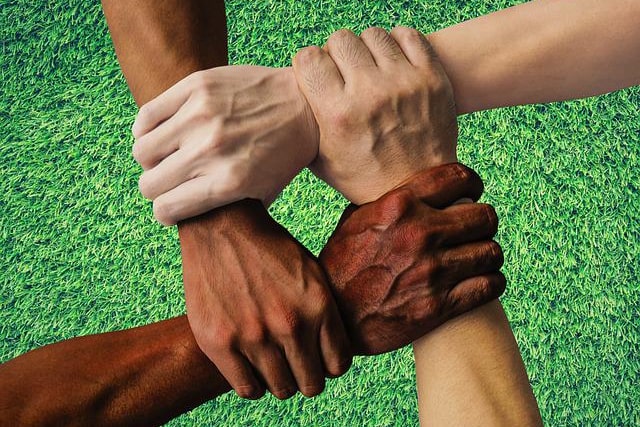 According to a 2009 British study, job applicants from ethnic and racial minorities are 74% less likely to get hired. Researchers in the US found that doctors prescribe stronger painkillers to white patients, compared to African-Americans or Latinos. Another study from the University of California, Los Angeles found that black males are more likely to be perceived as threatening than their white counterparts.
Concerningly, in all of these studies – and many others on the same line – the decision was made by the subconscious part of the brain, without any explicit racism from the participants. It’s more likely that most of the subjects don’t hold prejudiced views, or at least don’t admit to holding them. It is the unconscious side of the brain influencing those decisions, even if they are further reinforced by conscious thought. The brain parts involved in this process, which starts in childhood, have even been isolated.
According to a 2009 British study, job applicants from ethnic and racial minorities are 74% less likely to get hired. Researchers in the US found that doctors prescribe stronger painkillers to white patients, compared to African-Americans or Latinos. Another study from the University of California, Los Angeles found that black males are more likely to be perceived as threatening than their white counterparts.
Concerningly, in all of these studies – and many others on the same line – the decision was made by the subconscious part of the brain, without any explicit racism from the participants. It’s more likely that most of the subjects don’t hold prejudiced views, or at least don’t admit to holding them. It is the unconscious side of the brain influencing those decisions, even if they are further reinforced by conscious thought. The brain parts involved in this process, which starts in childhood, have even been isolated.
Being Racist
 According to a 2009 British study, job applicants from ethnic and racial minorities are 74% less likely to get hired. Researchers in the US found that doctors prescribe stronger painkillers to white patients, compared to African-Americans or Latinos. Another study from the University of California, Los Angeles found that black males are more likely to be perceived as threatening than their white counterparts.
Concerningly, in all of these studies – and many others on the same line – the decision was made by the subconscious part of the brain, without any explicit racism from the participants. It’s more likely that most of the subjects don’t hold prejudiced views, or at least don’t admit to holding them. It is the unconscious side of the brain influencing those decisions, even if they are further reinforced by conscious thought. The brain parts involved in this process, which starts in childhood, have even been isolated.
According to a 2009 British study, job applicants from ethnic and racial minorities are 74% less likely to get hired. Researchers in the US found that doctors prescribe stronger painkillers to white patients, compared to African-Americans or Latinos. Another study from the University of California, Los Angeles found that black males are more likely to be perceived as threatening than their white counterparts.
Concerningly, in all of these studies – and many others on the same line – the decision was made by the subconscious part of the brain, without any explicit racism from the participants. It’s more likely that most of the subjects don’t hold prejudiced views, or at least don’t admit to holding them. It is the unconscious side of the brain influencing those decisions, even if they are further reinforced by conscious thought. The brain parts involved in this process, which starts in childhood, have even been isolated.
#8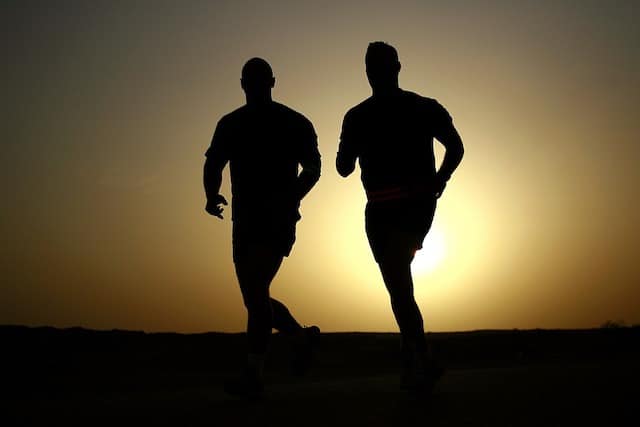 Proprioception is one of the other senses we have besides the five we know. It is the spatial awareness of our joints, which helps us maintain balance and perform everyday tasks. Plants use it to regulate growth and form in response to external and internal signals, such as wind speed.
Our sense of proprioception depends largely on sensory receptors in our muscles, joints, and skin, as well as inputs from our nervous system. Much of it happens in the active part of the brain, but it also involves the subconscious in ways we don’t understand. Subconscious proprioception is one example. That’s why we don’t have to consciously decide how to sit or stand every time we do it, which would be pretty weird.
Proprioception is one of the other senses we have besides the five we know. It is the spatial awareness of our joints, which helps us maintain balance and perform everyday tasks. Plants use it to regulate growth and form in response to external and internal signals, such as wind speed.
Our sense of proprioception depends largely on sensory receptors in our muscles, joints, and skin, as well as inputs from our nervous system. Much of it happens in the active part of the brain, but it also involves the subconscious in ways we don’t understand. Subconscious proprioception is one example. That’s why we don’t have to consciously decide how to sit or stand every time we do it, which would be pretty weird.
Proprioception
 Proprioception is one of the other senses we have besides the five we know. It is the spatial awareness of our joints, which helps us maintain balance and perform everyday tasks. Plants use it to regulate growth and form in response to external and internal signals, such as wind speed.
Our sense of proprioception depends largely on sensory receptors in our muscles, joints, and skin, as well as inputs from our nervous system. Much of it happens in the active part of the brain, but it also involves the subconscious in ways we don’t understand. Subconscious proprioception is one example. That’s why we don’t have to consciously decide how to sit or stand every time we do it, which would be pretty weird.
Proprioception is one of the other senses we have besides the five we know. It is the spatial awareness of our joints, which helps us maintain balance and perform everyday tasks. Plants use it to regulate growth and form in response to external and internal signals, such as wind speed.
Our sense of proprioception depends largely on sensory receptors in our muscles, joints, and skin, as well as inputs from our nervous system. Much of it happens in the active part of the brain, but it also involves the subconscious in ways we don’t understand. Subconscious proprioception is one example. That’s why we don’t have to consciously decide how to sit or stand every time we do it, which would be pretty weird.
#9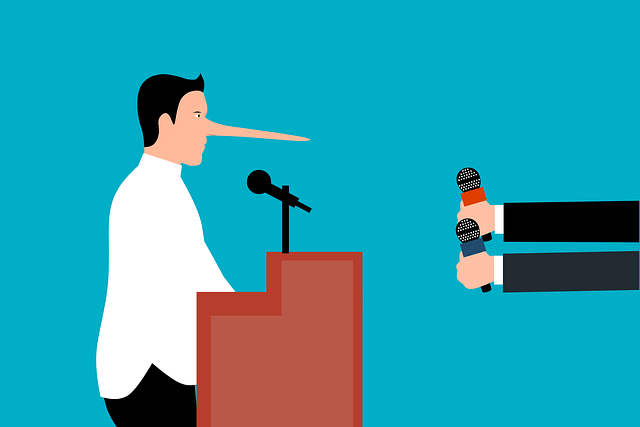 Studies have shown that people are bad at lying in almost every study we’ve done. Overall accuracy is about 54%, which is just a bit better than a coin toss. As social creatures, we tend to guess what others are thinking or feeling without having to think about it. That’s all there is to it!
It turned out that the scientists were looking at the conscious part of the brain. To tell if someone is lying, we look for visible signs like fidgeting or avoiding eye contact. In the absence of those cues, the brain cannot tell. That only works in cases of bad liars. But the subconscious can still work. Brains have an intuitive way of picking out dishonesty and deceit, and it’s pretty accurate most of the time, too. When people say they have a ‘bad feeling’ about someone, they mean it.
Studies have shown that people are bad at lying in almost every study we’ve done. Overall accuracy is about 54%, which is just a bit better than a coin toss. As social creatures, we tend to guess what others are thinking or feeling without having to think about it. That’s all there is to it!
It turned out that the scientists were looking at the conscious part of the brain. To tell if someone is lying, we look for visible signs like fidgeting or avoiding eye contact. In the absence of those cues, the brain cannot tell. That only works in cases of bad liars. But the subconscious can still work. Brains have an intuitive way of picking out dishonesty and deceit, and it’s pretty accurate most of the time, too. When people say they have a ‘bad feeling’ about someone, they mean it.
Detecting A Lie
 Studies have shown that people are bad at lying in almost every study we’ve done. Overall accuracy is about 54%, which is just a bit better than a coin toss. As social creatures, we tend to guess what others are thinking or feeling without having to think about it. That’s all there is to it!
It turned out that the scientists were looking at the conscious part of the brain. To tell if someone is lying, we look for visible signs like fidgeting or avoiding eye contact. In the absence of those cues, the brain cannot tell. That only works in cases of bad liars. But the subconscious can still work. Brains have an intuitive way of picking out dishonesty and deceit, and it’s pretty accurate most of the time, too. When people say they have a ‘bad feeling’ about someone, they mean it.
Studies have shown that people are bad at lying in almost every study we’ve done. Overall accuracy is about 54%, which is just a bit better than a coin toss. As social creatures, we tend to guess what others are thinking or feeling without having to think about it. That’s all there is to it!
It turned out that the scientists were looking at the conscious part of the brain. To tell if someone is lying, we look for visible signs like fidgeting or avoiding eye contact. In the absence of those cues, the brain cannot tell. That only works in cases of bad liars. But the subconscious can still work. Brains have an intuitive way of picking out dishonesty and deceit, and it’s pretty accurate most of the time, too. When people say they have a ‘bad feeling’ about someone, they mean it.
#10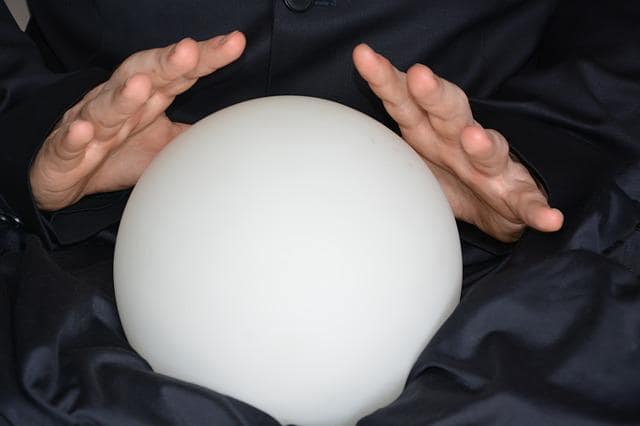 Since the brain is encased in a sealed, dark shell of bone called the skull, it can’t see anything. Everything the brain does is done by taking in inputs and signals from the environment, and using all of them to create a coherent, understandable image of the world around us.
This entire process occurs before things actually happen. It constantly uses past experience to predict what will happen in the future. This ability is quite easy to observe in athletes and musicians, whose brains can predict minor events much faster and more accurately than ours.
Researchers at UC Berkeley say this is the result of the cerebellum and the basal ganglia of the brain
Since the brain is encased in a sealed, dark shell of bone called the skull, it can’t see anything. Everything the brain does is done by taking in inputs and signals from the environment, and using all of them to create a coherent, understandable image of the world around us.
This entire process occurs before things actually happen. It constantly uses past experience to predict what will happen in the future. This ability is quite easy to observe in athletes and musicians, whose brains can predict minor events much faster and more accurately than ours.
Researchers at UC Berkeley say this is the result of the cerebellum and the basal ganglia of the brain
Predicting The Future
 Since the brain is encased in a sealed, dark shell of bone called the skull, it can’t see anything. Everything the brain does is done by taking in inputs and signals from the environment, and using all of them to create a coherent, understandable image of the world around us.
This entire process occurs before things actually happen. It constantly uses past experience to predict what will happen in the future. This ability is quite easy to observe in athletes and musicians, whose brains can predict minor events much faster and more accurately than ours.
Researchers at UC Berkeley say this is the result of the cerebellum and the basal ganglia of the brain
Since the brain is encased in a sealed, dark shell of bone called the skull, it can’t see anything. Everything the brain does is done by taking in inputs and signals from the environment, and using all of them to create a coherent, understandable image of the world around us.
This entire process occurs before things actually happen. It constantly uses past experience to predict what will happen in the future. This ability is quite easy to observe in athletes and musicians, whose brains can predict minor events much faster and more accurately than ours.
Researchers at UC Berkeley say this is the result of the cerebellum and the basal ganglia of the brain
Related Posts







